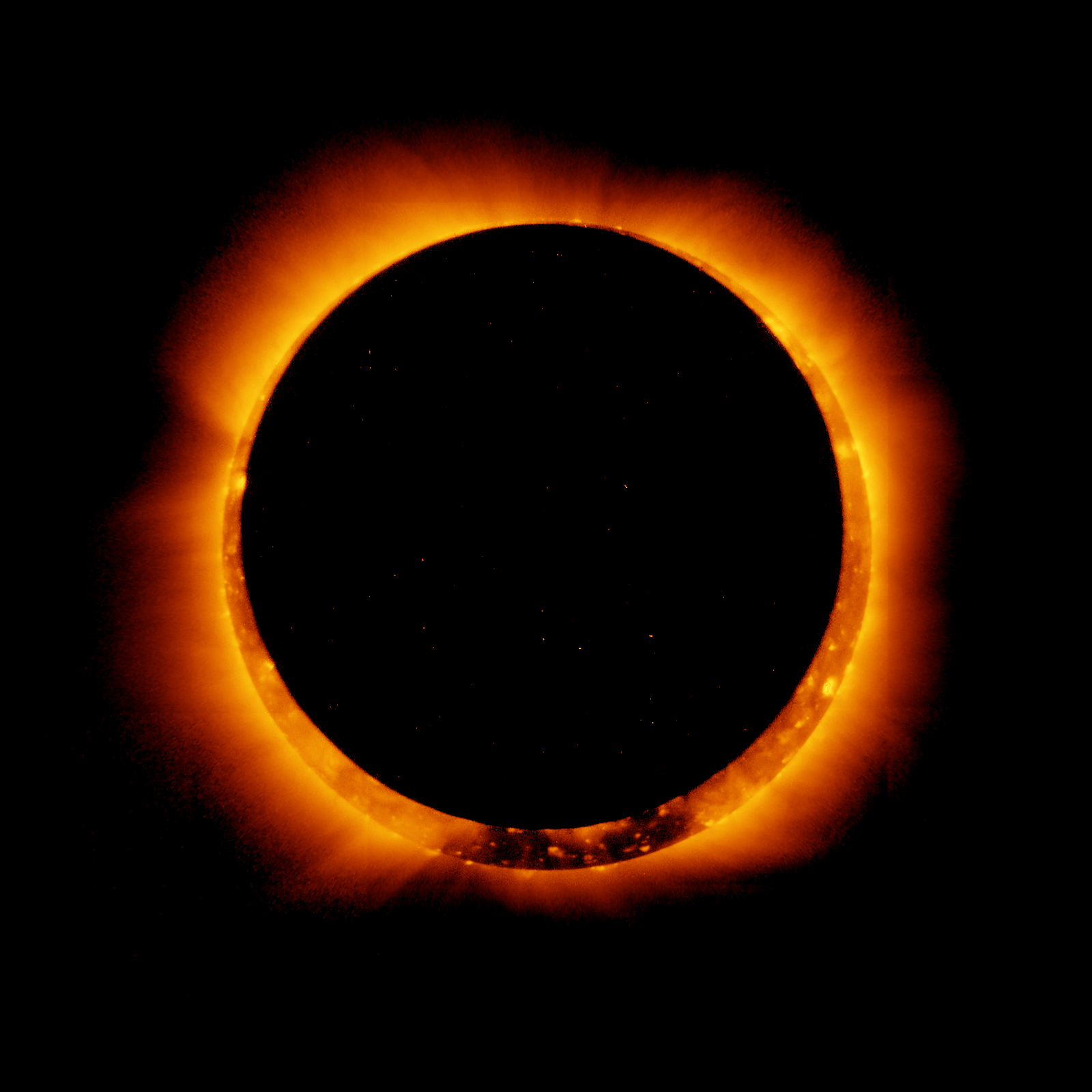Watch the 'Ring of Fire' Solar Eclipse Online Sunday

If you're not lucky enough to live in the path of this Sunday's (May 20) "ring of fire" solar eclipse, you can still watch the spectacular event online.
Several different organizations will broadcast live footage of the solar eclipse Sunday, as seen through telescopes in various locations around the world. Viewers can track the eclipse as it moves from East Asia, crosses the Pacific and darkens the skies over much of western Northern America. SPACE.com will offer several of the solar eclipse webcasts for readers.
The Slooh Space Camera, for example, will stream live feeds from telescopes in Japan, California, Arizona, and New Mexico, starting at 5:30 p.m. EDT (2130 GMT). Viewers will be able to snap their own pictures of the eclipse via the website, Slooh officials said. To watch, go to Slooh's homepage on Sunday: http://events.slooh.com/
Sunday's celestial event is what's known as an annular solar eclipse, in which the moon blocks most of the solar disk but leaves a ring of sunlight blazing around the moon's circumference.
The full "ring of fire" effect will be visible to observers in parts of eight states in the western United States during the late afternoon and evening Sunday. Much of the rest of North America will be treated to a partial eclipse.
"The western United States will enjoy bizarre solar effects that only occur every few decades. In the annularity path, which will be about 147 miles (237 km) wide when hitting our shores, the black moon will stand like a bull's-eye in front of the sun, its motion through space in-your-face obvious," said astronomer Bob Berman, who will be a commentator on the Slooh Space Camera webcast, in a statement.
"In a wider zone that includes most western states, the sun becomes an eerie narrow crescent," Berman added. "At maximum eclipse, the lighting on the ground will grow strange. Shadows of trees and bushes will contain thousands of tiny crescents, as spaces between leaves become pinhole cameras."
Breaking space news, the latest updates on rocket launches, skywatching events and more!
Annular eclipses, whose name derives from the Latin "annulus," or "little ring," are similar to total eclipses in that they occur when the moon lines up dead-on with the sun. But in this case, the moon is near apogee — the farthest point from Earth in its orbit around our planet — so it's too small in the sky to cover the sun's face completely.
Slooh Space Camera is not the only skywatching website offering a free webcast of the solar eclipse.
The electronics company Panasonic will broadcast live eclipse footage from the top of Japan's iconic Mt. Fuji, Sky and Telescope Magazine reports. The broadcast crew will scale the 12,390-foot (3,776-meter) peak with the aid of climbing guides.
Panasonic's feed can be found here: http://panasonic.net/eclipselive/
Further, the Hong Kong Observatory and Hong Kong Space Museum are providing a joint feed, letting the world see the eclipse from the vantage point of the huge city in southern China: http://www.weather.gov.hk/gts/hksm/astrophoto.htm
Finally, Sky and Telescope reports, amateur astronomer Scotty Degenhart will broadcast from Nevada's Area 51, a patch of desert about 80 miles (130 kilometers) northwest of Las Vegas. His feed will be available here: http://www.ustream.tv/channel/scottys-sky
While nothing can quite compare to the beauty and grandeur of a total solar eclipse, annular eclipses are pretty spectacular in their own right. And all you have to do to watch Sunday's is just log on to your computer.
Editor's note: If you snap a great photo of Sunday's annular solar eclipse and would like it to be considered for use in a story or gallery, please send it to SPACE.com managing editor Tariq Malik at tmalik@space.com.
You can follow SPACE.com senior writer Mike Wall on Twitter: @michaeldwall. Follow SPACE.com for the latest in space science and exploration news on Twitter @Spacedotcom and on Facebook.

Michael Wall is a Senior Space Writer with Space.com and joined the team in 2010. He primarily covers exoplanets, spaceflight and military space, but has been known to dabble in the space art beat. His book about the search for alien life, "Out There," was published on Nov. 13, 2018. Before becoming a science writer, Michael worked as a herpetologist and wildlife biologist. He has a Ph.D. in evolutionary biology from the University of Sydney, Australia, a bachelor's degree from the University of Arizona, and a graduate certificate in science writing from the University of California, Santa Cruz. To find out what his latest project is, you can follow Michael on Twitter.

